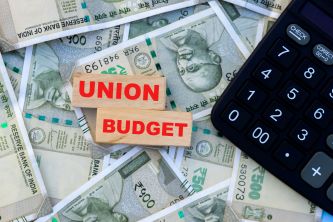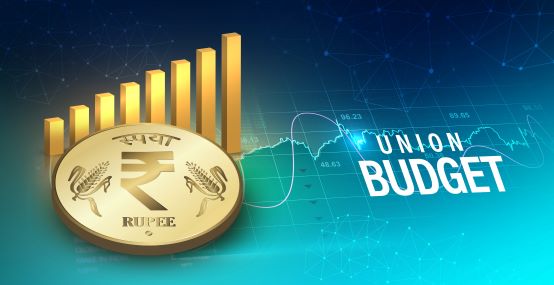What is PM Gati Shakti Yojana

Launched in 2021, PM Gati Shakti Yojna is a national master of the Narendra Modi government that looks at building of infrastructure in the country in an integrated manner. It seeks to create world-class infrastructure for a modern and advanced India. It breaks silos between ministries and departments, identifies gaps and removes obstacles that come in the way of infrastructure projects in the country. It is thus a welcome departure from the previous piecemeal approach to infrastructure execution. It adopts a holistic approach towards infrastructure building to make India a $5 trillion economy by 2026-27. Based on a digital platform, it brings 16 ministries together for integrated planning and coordinated implementation of infrastructure connectivity projects. Roads, railways, airports, ports, mass transport, waterways and logistics infrastructure are the so-called seven engines that are getting the push from the government for development under PN Gati Shakti. A national single window system allows parties interested in building infrastructure to submit their proposal online and track its progress using the same platform. In practical terms thus, projects like Bharatmala, Sagarmala, inland waterways, dry/land ports and UDAN are under one roof now on the digital platform. Economic zones like textile clusters, pharmaceutical clusters, defence corridors, electronic parks, industrial corridors, fishing clusters and agri zones are also being covered to improve connectivity and make Indian businesses more competitive. PM Gati Shakti will also leverage technology including spatial planning tools with ISRO imagery.
Vision of PM Gati Shakti Yojana
The PM Gati Shakti Yojana aims to create world-class infrastructure in the country. The plan has been conceptualized keeping in mind the target of making India a $5 trillion economy by 2026-27. That mark will also make it the world’s third-largest economy, behind just the US and China. It aims to develop a multi modal network with comprehensive support for planning, financing, innovation and technology.
Six pillars of PM Gati Shakti Yojana
Comprehensiveness
It covers all the current and planned initiatives of various ministries and departments under one centralized portal. Every department now has the visibility and knowledge of each other's activities, which enables critical inputs data in planning and execution of projects in a comprehensive manner.
Prioritization
Through this, armed with close to real time and better information, different departments will be able to prioritize their projects through cross-sectoral interactions
Optimization
The National Master Plan will assist different ministries in planning for projects after identification of critical gaps. For the transportation of the goods from one place to another, the plan will help in selecting the most optimum route in terms of time and cost.
Synchronization
There used to be lack of coordination in planning and implementation between individual ministries and departments often as they worked in silos. PM Gati Shakti helps in synchronizing the activities of each department, as well as of different layers of governance, in a holistic manner by ensuring coordination of work between them.
Analytical
The plan provides the entire data at one place with GIS-based spatial planning and analytical tools having 200+ layers, enabling better visibility for the agency executing the project. PM Gati Shakti also leverages technology including spatial planning tools with ISRO imagery developed by Bhaskaracharya National Institute for Space Applications and Geoinformatics.
Dynamic
All ministries and departments are now be able to visualize, review and monitor the progress of projects going on in various sectors at the same time, through the GIS platform. This is because the satellite imagery gives actual on-ground progress at regular intervals and progress of the projects is uploaded regularly on the portal. It helps in identifying the vital interventions for enhancing and updating the master plan.
How does it work?
A digital platform has been set up. It acts as a national single window system for parties to apply for projects under various ministries. The status of the applications and the projects can be tracked on a near real-time basis. The single window system has been entrusted with the task of onboarding critical approvals and NOCs from nine ministries for end-to-end application and subsequent approval. The existence of a unified platform allows ministries to coordinate amongst themselves, have a better grasp of the obstacles and thus resolve them soonest. Based on the information shared by the ministries, more than 427 approvals and no-objection certificates (NOCs) have been mapped onto a ‘Know Your Approvals’ module for applicants to understand the list of approvals that they need for their infrastructure projects under PM Gati Shakti.
What are the advantages of PM Gati Shakti?
- It reduces time and cost needed to get approvals from various ministries and departments. It speeds up approvals for projects.
- It leads to near real-time tracking of the application. It leads to quick resolution of obstacles facing the project because of better coordination among various ministries and departments. This helps the government as well as the agency executing the project.
- It avoids disputes as thorny issues are resolved in time which prevents unnecessary litigation.
- It looks at infrastructure building as a complete and holistic matter, avoiding a piecemeal approach. This helps in adoption of the best solution to resolve any infrastructure issue, avoids disjointed efforts and duplication besides leading to optimal utilization of resources.
Union Budget 2024 - PM Gati Shakti Yojana Updates
In the Interim Budget that the Hon’ble Finance Minister Nirmala Sitharaman announced on February 3, construction of three new major economic railway corridors was proposed. These are (1) energy, mineral and cement corridors, (2) port connectivity corridors, and (3) high traffic density corridors. The projects have been identified under the PM Gati Shakti for enabling multi-modal connectivity. They will improve logistics efficiency and reduce cost.
The resultant decongestion of the high-traffic corridors will also help in improving operations of passenger trains, resulting in safety and higher travel speed for passengers. Together with dedicated freight corridors, these three economic corridor programmes will accelerate the country’s GDP growth and reduce logistic costs.
Not mentioned as such separately or given the name of Gati Shakti, the Finance Minister allocated Rs. 11.11 trillion as capital budget expenditure for the new financial year starting April 1. This is an 11.1% jump from last year and accounts for 3.4% of the GDP.
Disclaimer: ICICI Securities Ltd. (I-Sec). Registered office of I-Sec is at ICICI Securities Ltd. - ICICI Venture House, Appasaheb Marathe Marg, Prabhadevi, Mumbai - 400 025, India, Tel No : 022 - 6807 7100. I-Sec is a Member of National Stock Exchange of India Ltd (Member Code :07730), BSE Ltd (Member Code :103) and Member of Multi Commodity Exchange of India Ltd. (Member Code: 56250) and having SEBI registration no. INZ000183631. Name of the Compliance officer (broking): Ms. Mamta Shetty, Contact number: 022-40701022, E-mail address: complianceofficer@icicisecurities.com. Investments in securities markets are subject to market risks, read all the related documents carefully before investing. The contents herein above shall not be considered as an invitation or persuasion to trade or invest. I-Sec and affiliates accept no liabilities for any loss or damage of any kind arising out of any actions taken in reliance thereon. The contents herein above are solely for informational purpose and may not be used or considered as an offer document or solicitation of offer to buy or sell or subscribe for securities or other financial instruments or any other product. Investors should consult their financial advisers whether the product is suitable for them before taking any decision. The contents herein mentioned are solely for informational and educational purpose.
Please Enter Email
Thank you.
Related content

Articles - Personal Finance
Analysis of Interim Budget 2024
Get to knwo about the impact of interim budget 2024 and a detailed analysis in this article.

Articles - Personal Finance
What Is a Surplus Budget
Learn about surplus budget and how a budget surplus impacts the economony.

Articles - Personal Finance
What is a Budget Deficit
Find out the importance of budget deficit. Cause of budget deficit and What is the relationship between budget deficit and stock markets

Articles - Personal Finance
Union Budget 2024 – Trivia Part 2
The Union budget 2024 presentation is just around the corner. Let us look at some trivia regarding the Union budgets from the past

Articles - Personal Finance
What is Union Budget and Why it so Important
Learn about the what is the Union Budget in this article for a comprehensive information of its importance.

Articles - Personal Finance
Union Budget: Key Details & Importance
As we come closer to February 1, the chatter around the expectations over Union Budget increases. From young college students looking to start their careers and small business owners to leading economists and industrialists, almost every Indian citizen keeps a tab on the Budget announcement. Let us discuss what is Union Budget and its importance for the economy.

Articles - Personal Finance
Impact of the Budget 2024 on Share Markets
The Union Budget 2024 got quite a cheer from the share market as major indices ended on a positive note. The NIFTY 50 and the Sensex benchmark indices gained during the Budget speech and finished green.

Articles - Personal Finance
What to Expect From Budget 2022 for Individuals and Salaried People
Over the last two years, individuals, especially salaried people, have taken quite a hit because of the pandemic. Work from home has not only increased expenses such as electricity and WiFi bills but has also put a strain on take-home salary. Naturally, people hope that the government will step in and ease some of these troubles through their Union Budget announcements.

Articles - Personal Finance
What is the impact of the Union Budget on the Indian Stock Markets
Indian stock markets are dynamic prone to ups and downs depending on a host of factors. Every year, one major event that impacts the equities and bond markets is the announcement of the Union Budget.

Articles - Personal Finance
History of the Union Budget in India
The ritual of presenting the Indian Budget is more than two centuries old, dating back to colonial times. India's first-ever Budget was presented by James Wilson in 1860, a Scottish economist and politician.

Articles - Personal Finance
10 Taxes Affected by Budget
Taxes are the most crucial and most significant source of revenue for the Government. The Government uses the revenues generated from taxes to provide basic facilities to its citizens and the nation's overall development. For example, construction of roads, buildings, infrastructure, public healthcare facilities, providing various subsidies, etc.

Articles - Personal Finance
What is Populist Budget
A budget typically meant to please people is known as a populist budget. It spends more on lucrative schemes that can increase the Government's fiscal deficit. Such a budget doesn't have any enduring positive impact on the country's economy.

Articles - Personal Finance
What are the Components of Union Budget
The Union Budget of India has two main components, each with two sub-components. To know more in detail, visit the link.

Articles - Personal Finance
Types of Budget in India
Deep dive into the three different types of government budgets and their impact on the economy.

Articles - Stocks
What is the Budget? Union Budget for Beginners
The Finance Minister of India presents the Union Budget on the first day of February every year. It is also known as the annual financial statement of the country. It contains the details of the revenue sources and expenses undertaken by the Government during the applicable financial year.

 Top Mutual Funds
Top Mutual Funds







COMMENT (0)